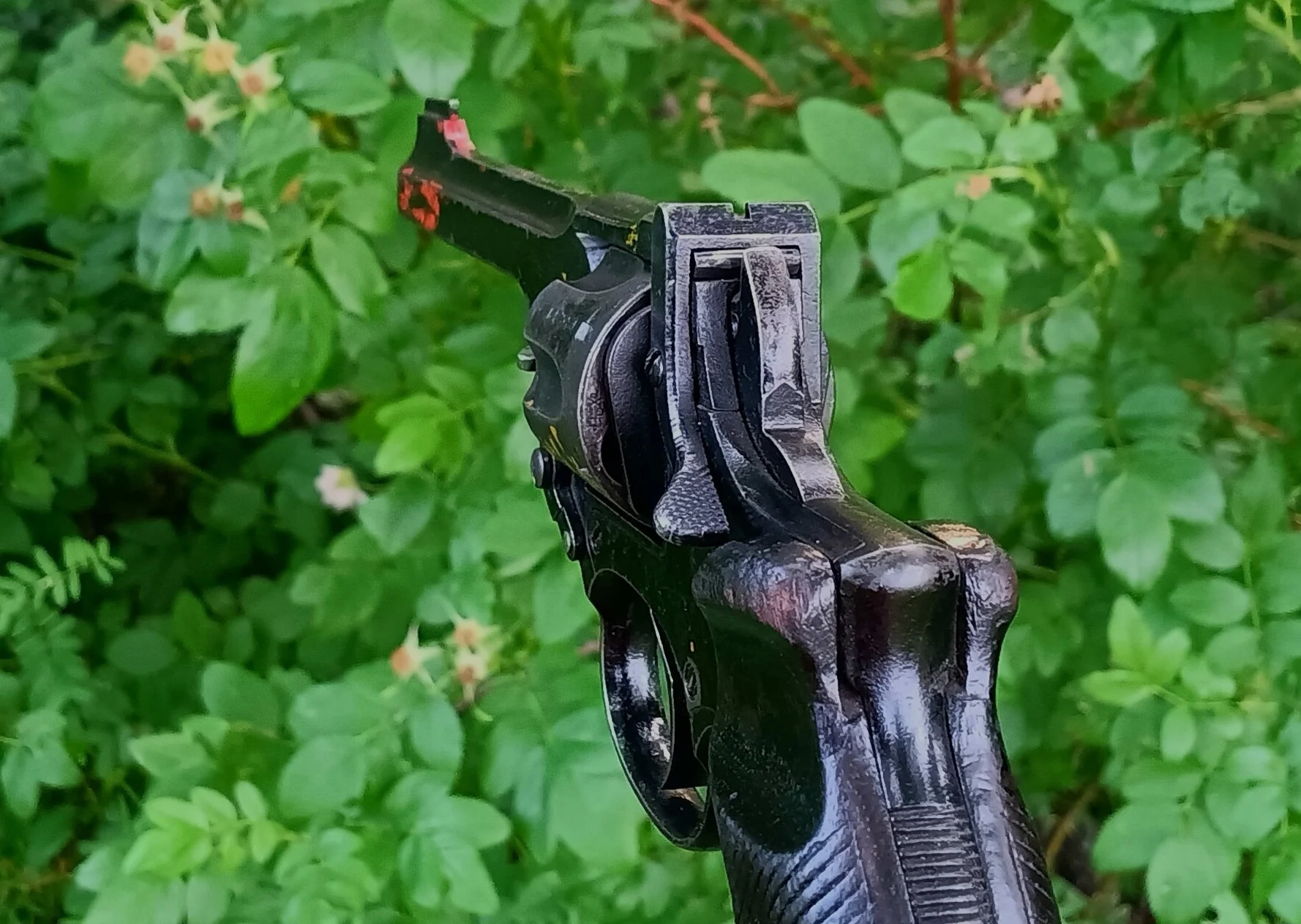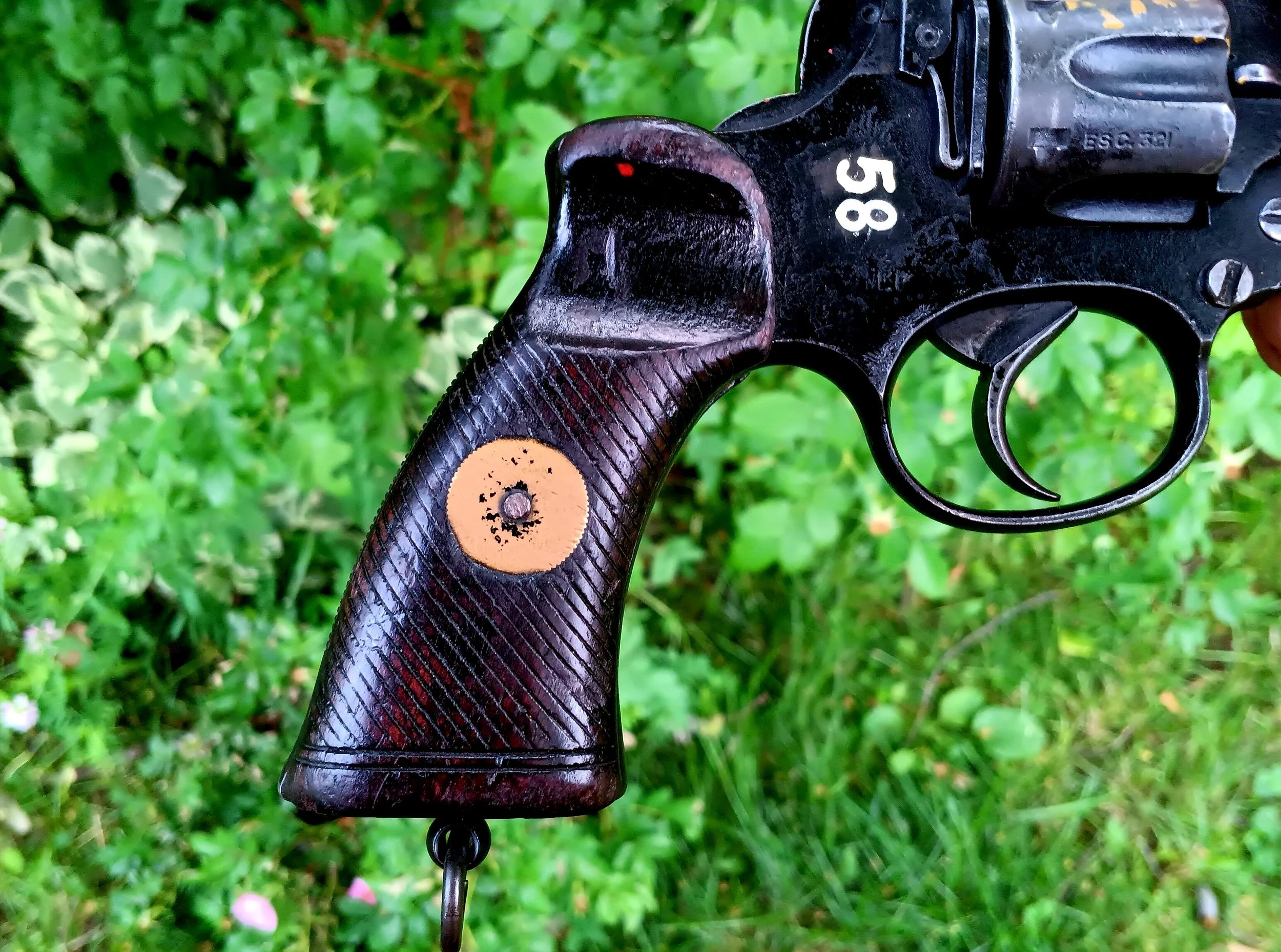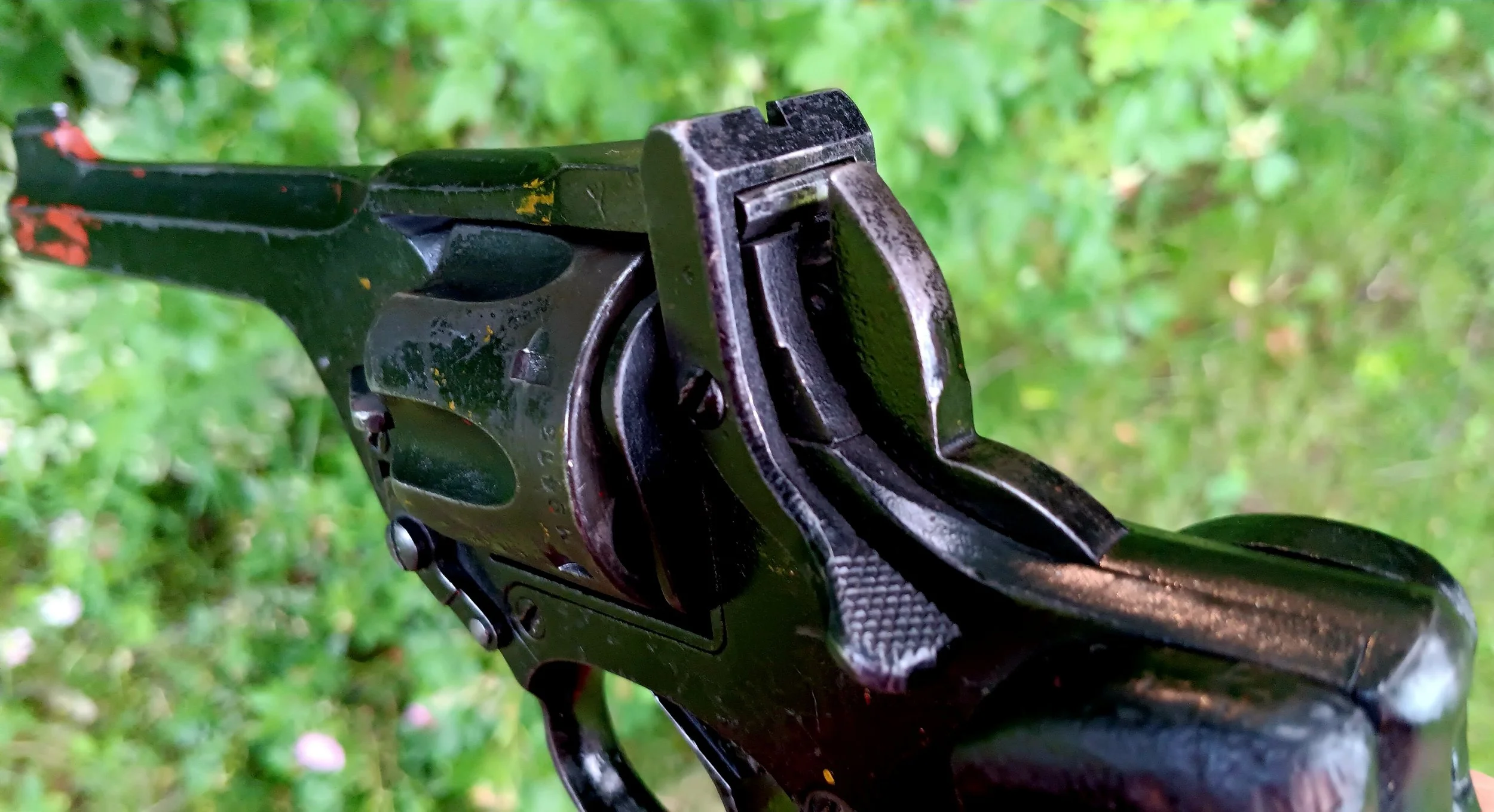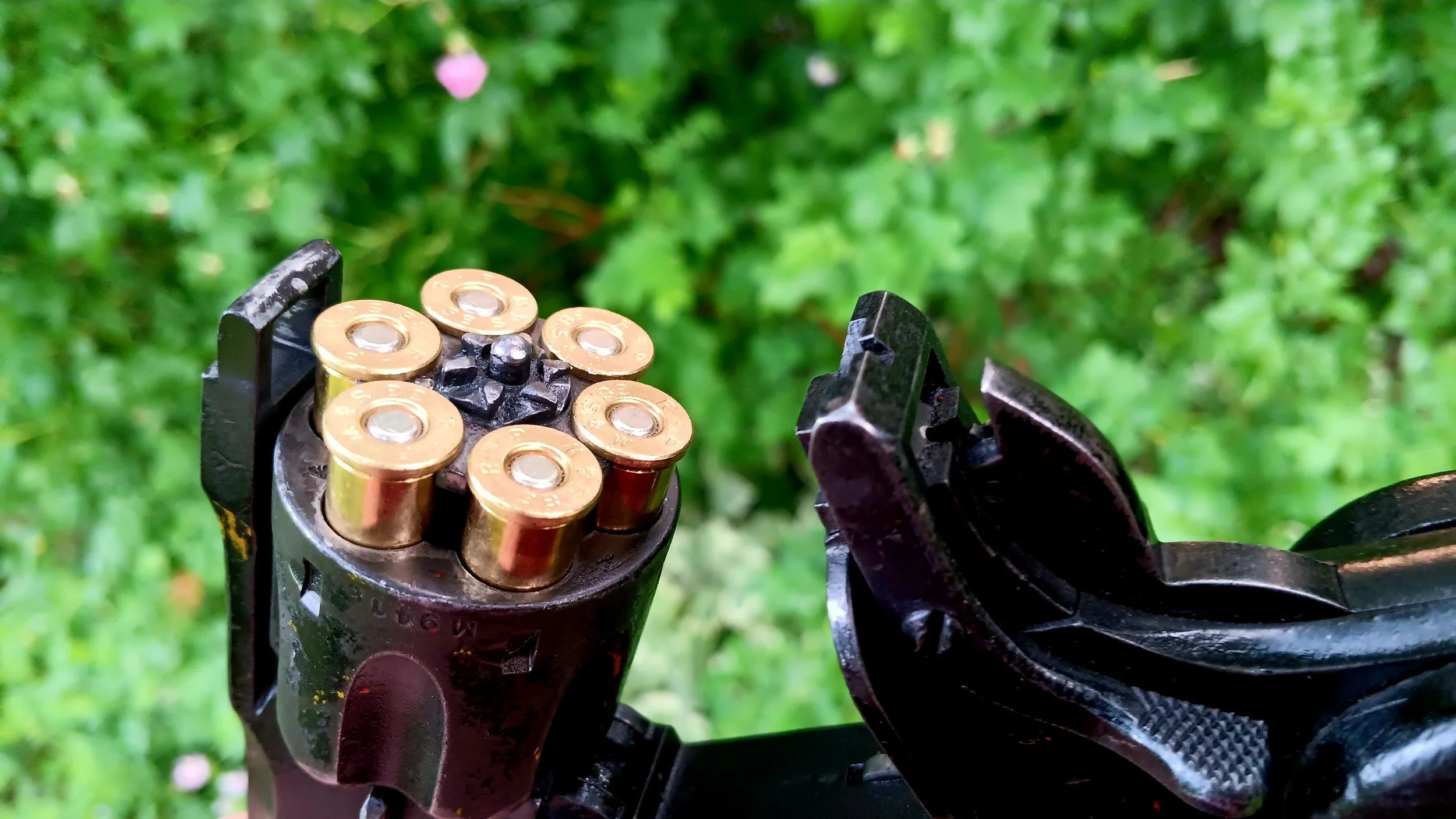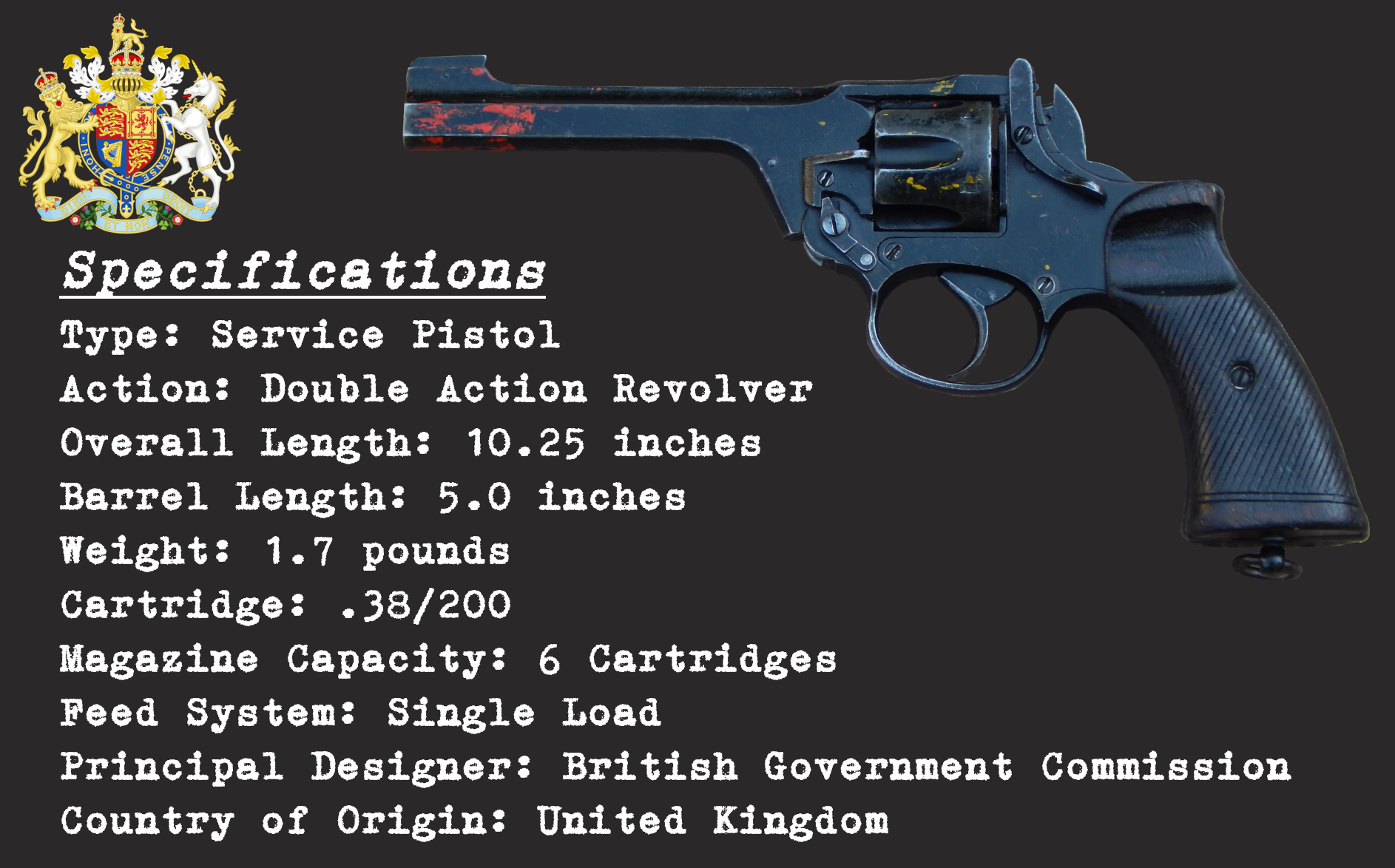Enfield No2 Mk1*
An attempt at cost saving by the British Government in the interwar years led to the development of a near copy of the Webley Revolver produced by the Royal Small Arms Factory at Enfield. This .38 caliber revolver would become the primary British sidearm of the Second World War.
The History
During the Great War shortages of the standardized Webley MkV revolver had led to the adoption of the Webley MkVI, which was essentially the same but with a number of premium commercial features added. This large .455 caliber revolver had served well during the conflict, but in the interwar years Britain, like many other powers, elected to reexamine their standard sidearm.
The .455 cartridge was potent, but concerns existed regarding the recoil of the weapon, and the consequent difficulties in training with what was intended to be a secondary weapon in the first place. The search for a replacement cartridge would land with the .38 Smith and Wesson cartridge, a popular type with police issue weapons in the United States, and Webley and Scott were subsequently tasked with the creation of a variant of their revolver chambered for a variant of it. This would propel a 200 grain lead bullet, later switched to a 180 grain jacketed bullet so as not to infringe on the Hague Convention.
The sights on the Enfield are similar to the Webley, with a squared notch rear on the release lever and an adjustable blade front. Note also the checkering of the frame backstrap
The result was the scaled down Webley MkIV, but the British government elected not to purchase it, instead adopting a very similar design that could be produced by government arsenals at a lower cost, designated the No2 Mk1. This new pistol entered service in 1931, but soon faced legal troubles as Webley and Scott sued the government over patent infringement, although this was dismissed. The design would be altered in 1938 into the No2 Mk1*, with the addition of redesigned grip panels made of plastic and intended for a more comfortable hold, as well as the deletion of the hammer spur and single-action capability. This would serve as the standard British handgun going into the Second World War.
The top of the barrel is marked with the caliber of .38 as well as a year of production, in this case 1942
In combat during the war the Enfield proved itself a reliable weapon, and capable of good accuracy despite the long double action trigger pull. Its main drawback stemmed from the .38 caliber cartridge, which was found to be lacking in stopping power. This problem was somewhat lessened as full lead commercial ammunition was fed to the front lines due to wartime shortages, but it remained noticably behind the older .455 as well as contemporary automatic cartridges such as the American .45ACP and the German 9mm Parabellum in that department.
The Enfield would remain in service after the end of the war in 1945, seeing use across the crumbling British Empire. It would be formally replaced with the L9, a variant of Browning’s High Power 9mm automatic in 1963, although they would not disappear entirely until the end of the decade. Even after this, they remained in service as police issue revolvers around the old Empire, in some cases remaining so to this day.
Markings were present on the right hand side of the frame, generally consisting of a British crown, the factory and the model designation. In this case these have been mostly obscured by the paint of a later rack number
The Design
The Enfield No2 is at its core a top-break double action only revolver, and at first glance can be difficult to discern from the Webley family. Internally the weapon was a near copy of the Webley mechanism, with the only notable difference being the lack of a single action capability in the Mk1* and Mk1** variants.
Grips were typically made of wood, with a unit marking disk as well as pronounced finger grooves that make for a comfortable hold
A popular myth exists that the elimination of the hammer spur was done to favor British tankers, who were concerned about it catching inside of their vehicles, but this is, in reality, untrue. The true cause for the change is the much more mundane reason that during the Second World War Era pistol training was heavily focused on pointing and shooting, with a lower emphasis on actual aimed fire. As a result, it was considered redundant to undertake the additional expense of creating a single action mechanism, and as a result it was deleted.
The revolver otherwise uses the standard British type top break action, with a robust latch that incorporates the rear sight, along with an automatic simultaneous ejector. Speed loaders were available on the civilian market, but were never issued by the government, and as a result were a rare appearance in the field, with revolvers loaded singly with loose cartridges.
The hammer on the No2 Mk1* lacks a spur or single-action notch, differentiating it from the earlier and less common No2 Mk1*. Note also the pronounced thumb latch for opening the action
This Example
The example in the reference collection was produced in 1942 by the Royal Small Arms Factory at Enfield. It bears matching serial numbers on all marked components. The pistol seen here has been given an enamel paint finish with a number of colored areas indicating different uses during its service career. A hand painted rack number is also visible on it, covering most of the manufacturer’s markings on the side of the frame.
Once the action is open the ejector star automatically actuates to clear the cylinder before dropping back into place for loading
Opinions
The Enfield No2 Mk1* was the only revolver fully standardized by a major power during the Second World War; a holdout from an earlier time in a conflict that occured well into the age of the autoloading handgun. It is quite accurate despite the heavy double action only trigger pull, and it has some of the best sights of the era. The .38/200 cartridge is lacking in power, although it does produce mile recoil to make for a fairly pleasant shooting pistol.
Revolver drawn, a British officer advances past a burning farmhouse in Normandy, 1944
British War Office
Observed Values and Frequency
Updated: December, 2024
AVERAGE VALUE (USD): $500
FREQUENCY: Uncommon
COLLECTOR’S NOTES: The original No2 Mk1 with single action trigger is quite rare, as are No2 Mk** variants. Very rare examples can be found produced by the Howard Auto Cultivator Company in Australia (marked HAC).

